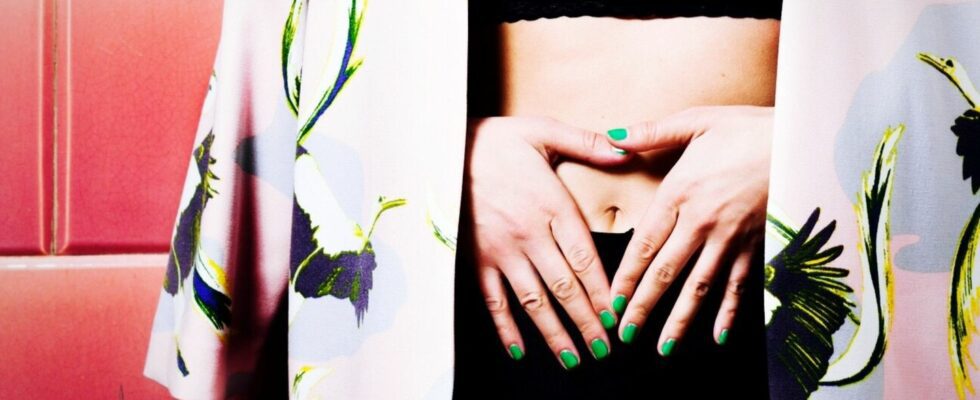avoid trash
Tampons with plastic? Never again! This is how sustainable menstruation works
© Sylvie Gagelmann / EyeEm / Getty Images
Garbage or much more too much garbage is the topic of our time. Hygiene products in particular are not a particularly clean thing when it comes to the environment. 45 billion tampons and pads are used worldwide every year. Menstruation is also sustainable.
Plastic packaging, plastic foil and pesticide-contaminated cotton – these are what conventional menstrual hygiene products usually consist of. But more and more women no longer want to do that and want to live more consciously, sustainably and healthily. The demand for waste-free and environmentally friendly alternatives to disposable products that cannot be recycled and also consume a lot of resources during production is increasing. Luckily, so is the selection of sustainable, healthy products.
Paper instead of plastic – organic tampons
Without chemicals, without pesticides and also packed in paper: With the new ones worldwide tampons from the Stuttgart company The Female Company not only saves more than 620 tons of plastic per year, but are also a much healthier option for our body compared to conventional tampons. And best of all: The start-up’s products are easily available in the company’s online shop and as a subscription.
Who prefer Tie and panty liners used, will also find what they are looking for at the great company and can get the desired rations of biodegradable bandages (also especially for childbed) and panty liners without polyester.
But not only The Female Company, other well-known manufacturers of menstrual products are now following suit and have sustainable, ecological tampons in their product range.
Without risk – menstrual cup
The menstrual cup is probably the hygiene product that has gained the most momentum in recent months. Initially viewed with suspicion as a strange, somehow disgusting eco-product, it is now available in a wide variety of colors and shapes on the shelves of drugstores. Rightly so! Because the menstrual cup is not only sustainable, but also hypoallergenic, vegan and healthy. Made from medical-grade silicone, it can be used for years if used correctly. It can also be worn for up to 12 hours. For comparison: A tampon should be changed after a maximum of 6 hours, otherwise toxic shock syndrome (TSS) can occur. Another pro for the cup: This danger does not exist here. During the period, it is simply emptied, rinsed out with cold water and boiled off at the end of the period and kept for the next round. While it does take a tiny bit of practice to use, it’s definitely not rocket science to be shy about. Just try it!
Pure nature – menstrual sponge
menstrual sponges consist of real natural sponges. The idea might be a little strange, but a sponge is just as effective as a tampon, but produces less waste. And an absolute plus: it can also be worn during sex during your period. The so-called Levantine sponge is wetted, wrung out and inserted into the vagina. The fine pores of the sponge can absorb large amounts of liquid. The sponge is cleaned with running, cold water.
Everything fits – period underwear
Especially for young girls and women who don’t want to or can’t introduce themselves (yet). menstrual panties a great, sustainable concept. These are quite simply underpants with an integrated bandage. Period panties, such as those by Kora Mikino or Ooia period panties, are gradually conquering their place in the market and not only look great, they also feel good and don’t let anything slip. Thanks to a special technology, they are waterproof, can absorb about as much blood as one or two tampons and have antibacterial properties. After wearing, it is best to rinse the period panties by hand with cold water and then wash them as normal in the machine at 40 degrees – also together with other dark laundry – they will not be damaged, really!
Don’t Waste, Reuse – Washable Pads
It looks similar to the panties reusable pads and panty liners off. If you have the time and leisure and are enthusiastic about sewing, you can even make the fabric panty liners yourself. If you don’t want that, you can also buy the washable pads made from organic cotton, for example from Kulmine or Bloodmilla. The cloth pads are best rinsed out with cold water after use and then cleaned in the washing machine at 60 degrees.
Ultimately sustainable – free menstruation
It is hardly possible to be more environmentally conscious than free menstruation: Free Bleeding completely dispenses with hygiene products. The movement stems primarily from feminist circles that call for the period to be freed from taboos. Since the period occurs at intervals, it is primarily about sensitization and sensitivity to one’s own body. With free bleeding, women go to the toilet at the right moment. A method that is certainly not suitable for everyone. Nevertheless, it naturally protects the environment the most.

